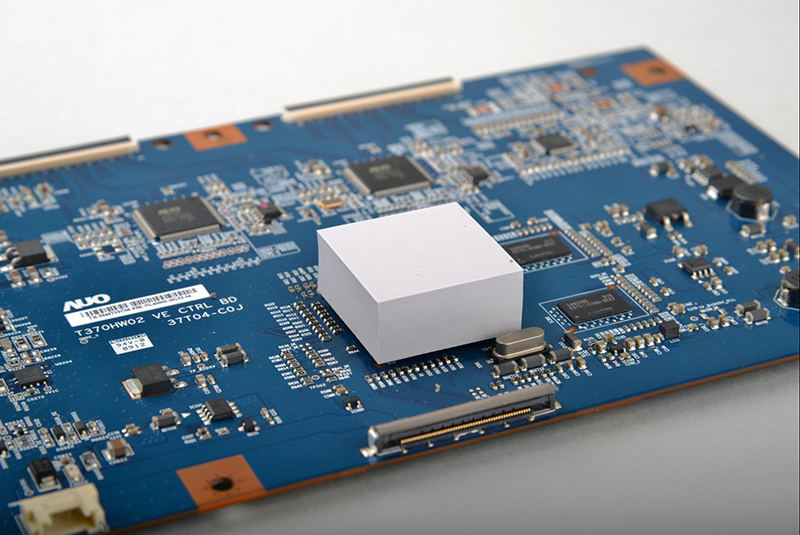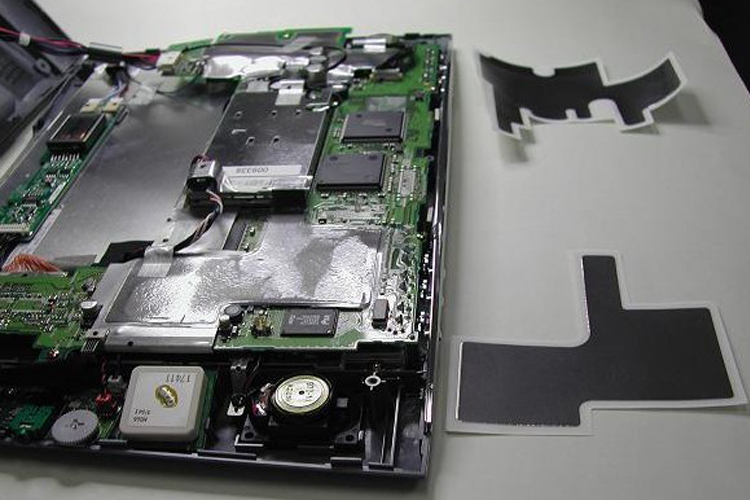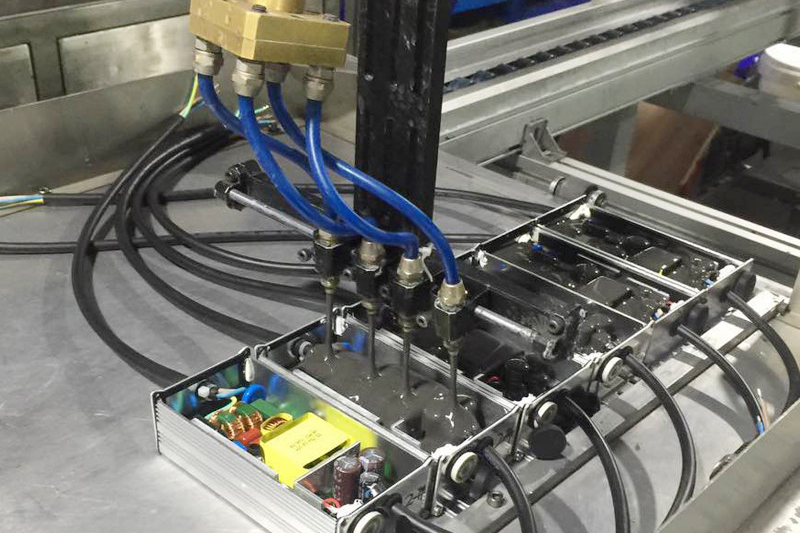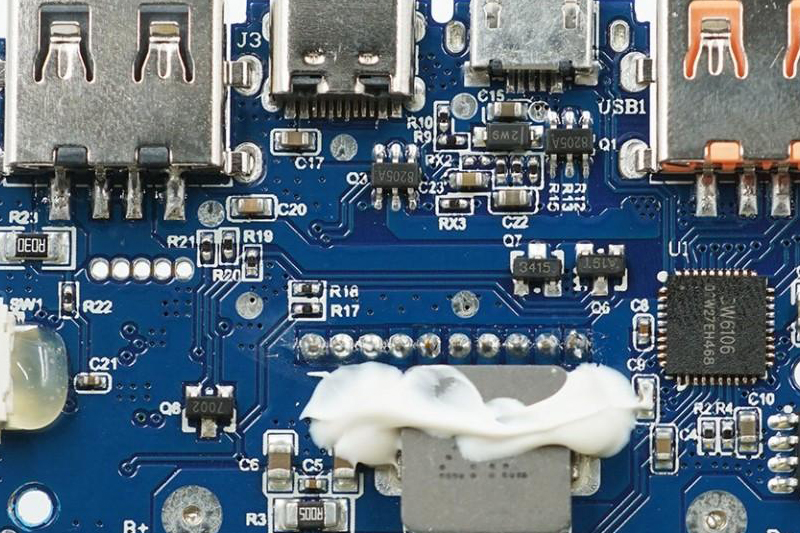2024-09-29 17:04 Author:GAODAO
Background of Thermal Interface Materials
Heat dissipation has always been a key research area in the electronics industry, and the actual operating temperature of electronic components is one of the key factors affecting their reliability. With the development of electronic devices towards miniaturization and high power consumption, their power density is gradually increasing, and the heat generation of electronic devices is also increasing exponentially, which puts higher demands on the heat dissipation performance of the system; Thermal interface materials were born from this.

Basic Overview of Thermal Interface Materials
Thermal Interface Materials (TIM), also known as Thermal Interface Materials or Interface Thermal Conductive Materials, is a commonly used material for IC packaging and electronic heat dissipation. It is mainly used to fill the micro gaps and uneven surface holes caused by the bonding or contact of two materials, reduce thermal contact resistance, and improve device heat dissipation performance.
There are extremely fine uneven gaps between the surface of microelectronic materials and the heat sink. If they are directly installed together, the actual contact area between them is only 10% of the heat sink base area, and the rest are air gaps. Because the thermal conductivity of air is only 0.024W/(m * K), it is a poor conductor of heat, which will result in a very large contact thermal resistance between electronic components and the heat sink, seriously hindering the conduction of heat and ultimately causing low efficiency of the heat sink. Filling these gaps with high thermal conductivity thermal interface materials, removing air from them, and establishing effective thermal conduction channels between electronic components and heat sinks can significantly reduce contact thermal resistance and fully utilize the function of the heat sink. Thermal interface (contact surface) materials play a crucial role in thermal management and are an important research branch in this discipline.

In order to meet the heat dissipation needs of electronic products, there are a wide range of thermal conductive interface materials. The commonly used thermal conductive interface materials in the market are: thermal conductive silica gel sheet, thermal conductive clay, thermal conductive gel, thermal conductive double-sided adhesive, thermal conductive silicone grease, thermal conductive potting adhesive, thermal conductive adhesive, thermal conductive graphite sheet, thermal conductive silicon tape, thermal conductive phase change materials, etc. Today, NFION thermal conductive interface material manufacturers will tell you about several key characteristics of thermal conductive interface materials?
1、 Thermal characteristics
1. Thermal impedance
Thermal resistance is equal to R=d/k, which indicates that thermal resistance is inversely proportional to thermal conductivity k and directly proportional to material thickness. That is to say, the thermal conductivity of a material is a constant, and the thermal resistance is only related to the thickness of the material. The thicker the thickness, the greater the thermal resistance, and vice versa.
Contact thermal resistance can be artificially controlled by selecting appropriate thermal interface materials based on the contact surface. This is the only way to control the total thermal impedance.
2 Thermal conductivity coefficient
The thermal conductivity coefficient is a marker for determining the thermal conductivity of a thermal interface material. The higher the thermal conductivity, the better the thermal conductivity.
Two electrical characteristics
1. Breakdown voltage
The measurement of breakdown voltage is the amount of voltage that a conductive material can withstand under specific conditions. This value indicates the electrical insulation capability of the thermal interface material. This value will be affected in humid and high-temperature environments because the thermal interface material absorbs moisture from the air.
2 volume resistivity
Volume resistivity is used to measure the volume electron resistance of a unit volume material. Volume resistivity is the ability of thermal interface materials to guide current leakage between energized components and metal heat dissipation devices. Like breakdown voltage, it is also affected by humidity and high temperature, which also leads to a decrease in volume resistivity.

Three elastic properties
1. Compression deformation
Compression deformation refers to the resultant force applied during deflection. When a compressive load is applied, the elastic material undergoes deformation, but the volume of the material remains unchanged. The compression deformation characteristics may vary depending on the geometry of the component, deflection rate, and size of the probe.
2 Stress Relaxation
When pressure is applied to the thermal interface material, a slow relaxation process occurs after initial deformation, followed by the removal of pressure, which continues until the pressure load reaches equilibrium with the intrinsic strength of the material.
3 Compression deformation
Compression deformation is the result of stress relaxation. If the thermal interface material endures pressure load for too long, some deformations will become longer deformations that cannot be restored after the load is reduced.

How to choose thermal interface materials?
After understanding the basic introduction of thermal interface materials, how can we choose a suitable thermal interface material? Firstly, determine the type of thermal interface material based on the customer's application; Secondly, select the appropriate thermal interface material based on parameters such as thermal conductivity, thickness, size, density, voltage resistance, and operating temperature of the product.
The selection of thickness is related to the gap size of the TIM position where the customer needs to solve the heat dissipation problem, as well as the density, hardness, compression ratio and other parameters of the TIM product itself. It is recommended to determine the specific parameters after sample testing. The selection of thermal conductivity mainly depends on the power consumption of the heat source of the product that needs to solve the heat dissipation problem, as well as the heat dissipation capacity of the radiator or heat dissipation structure.
The best choice for size is to cover the heat source, rather than the contact surface of the radiator or heat dissipation structural components. Choosing a size larger than the heat source will not significantly improve or enhance heat dissipation. When selecting the best matching thermal interface material, you can first choose at least two types of thermal interface materials, and then determine which thermal interface material is the most suitable by conducting thermal performance tests.